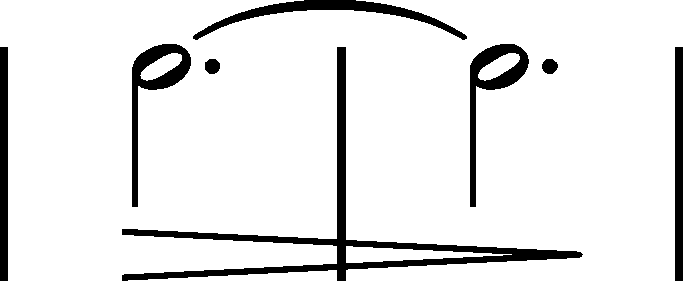



The  or
or  markings, written by Chopin in A in bars 6-7, 14-15, 30-31 and 38-39 and in two repetitions thereof (from bar 138 and from bar 589), are listed below:
markings, written by Chopin in A in bars 6-7, 14-15, 30-31 and 38-39 and in two repetitions thereof (from bar 138 and from bar 589), are listed below:
| b. 6-7 | b. 14-15 | b. 30-31* | b. 38-39 |
 |
 |
 |
 |
| b. 138-139 | b. 146-147 | b. 162-163 | b. 170-171 |
 |
 |
 |
 |
| b. 589-590 | b. 597-598 | b. 613-614 | b. 621-622** |
 |
 |
 |
 |
* In b. 30-31 the notation does not allow for a precise determination of the range of  ; the given marking is our reconstruction of Chopin's intention.
; the given marking is our reconstruction of Chopin's intention.
** In b. 621-622 there is no  ; it must be Chopin's oversight.
; it must be Chopin's oversight.
It can be seen that in analogous situations Chopin placed markings of different length, varying from evident long accents (b. 6-7, 162-163 and 589-590) to  hairpins, filling two full bars (b. 14-15, 38-39 and 613-614). The differentiation applies both to the bars with a pair of tied minims and the rhythmic variant in b. 30-31 and analog.; at the same time, except for b. 613-614, each marking encompasses only one tied chord. Therefore, according to us, one can draw two conclusions:
hairpins, filling two full bars (b. 14-15, 38-39 and 613-614). The differentiation applies both to the bars with a pair of tied minims and the rhythmic variant in b. 30-31 and analog.; at the same time, except for b. 613-614, each marking encompasses only one tied chord. Therefore, according to us, one can draw two conclusions:
- the differences in length do not influence the meaning of the markings – in fact, all of them are long accents;
- Chopin began from a typical long accent (b. 6-7), yet then he would generally place longer markings, as if he wanted to emphasise the length of echo of those syncopated chords.
On the above basis, we decided to unify the markings in all of those places. We suggest a compromise range of the markings, taking into account the Chopinesque predilection for longer markings, yet drawing attention to their accentuating nature thanks to clearly relating their range to the tied chords:  .
.
The remaining sources generally reproduced the text of the Stichvorlage, more or less accurately; therefore, they do not contribute to determining Chopin's intention. In addition, in EE there are visible traces of unifying the markings in the 1st half of the Scherzo – all markings contained therein have the length adopted by us in the main text. The markings were fully unified in GE2 (→GE3); each time the length of a marking was adjusted to a summary rhythmic value of a tied chord (2 or 1.5 bars). In our transcriptions we do not reproduce minor differences in the range of the  hairpins in those sources, adjusting them to two unified ranges: the one given in the main text or the relatively maximal one, two- or one-and-a-half-bar long like in GE2 (→GE3).
hairpins in those sources, adjusting them to two unified ranges: the one given in the main text or the relatively maximal one, two- or one-and-a-half-bar long like in GE2 (→GE3).
In the discussed b. 6-7 the short accent in GE1 and the extension of the marking in the remaining editions are particularly noteworthy.
Compare the passage in the sources »
category imprint: Differences between sources; Editorial revisions
issues: Long accents, Inaccuracies in GE, Inaccuracies in FE, Scope of dynamic hairpins, GE revisions
notation: Articulation, Accents, Hairpins




